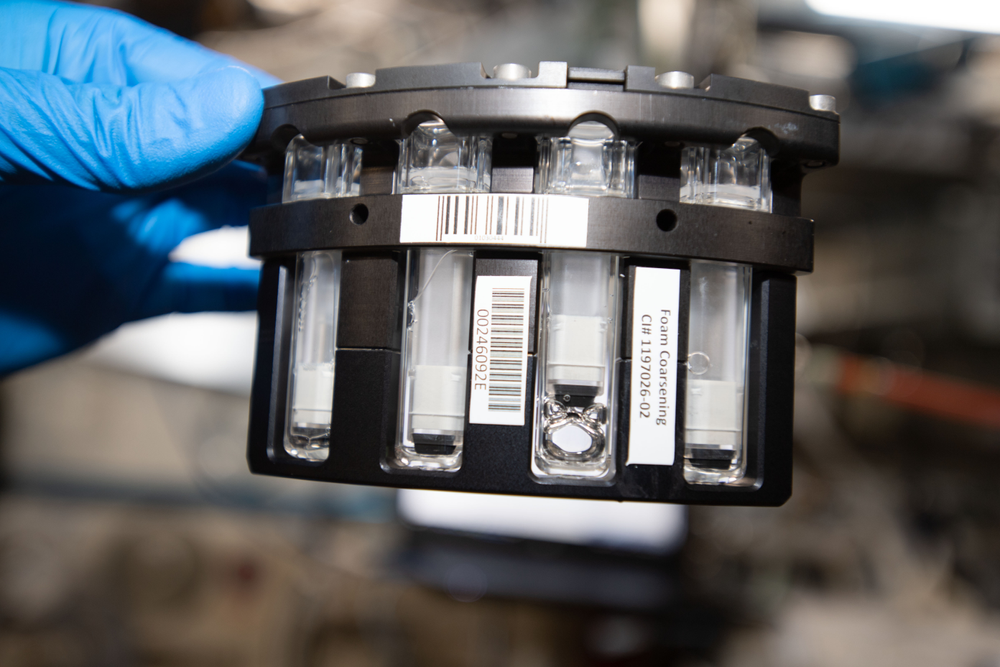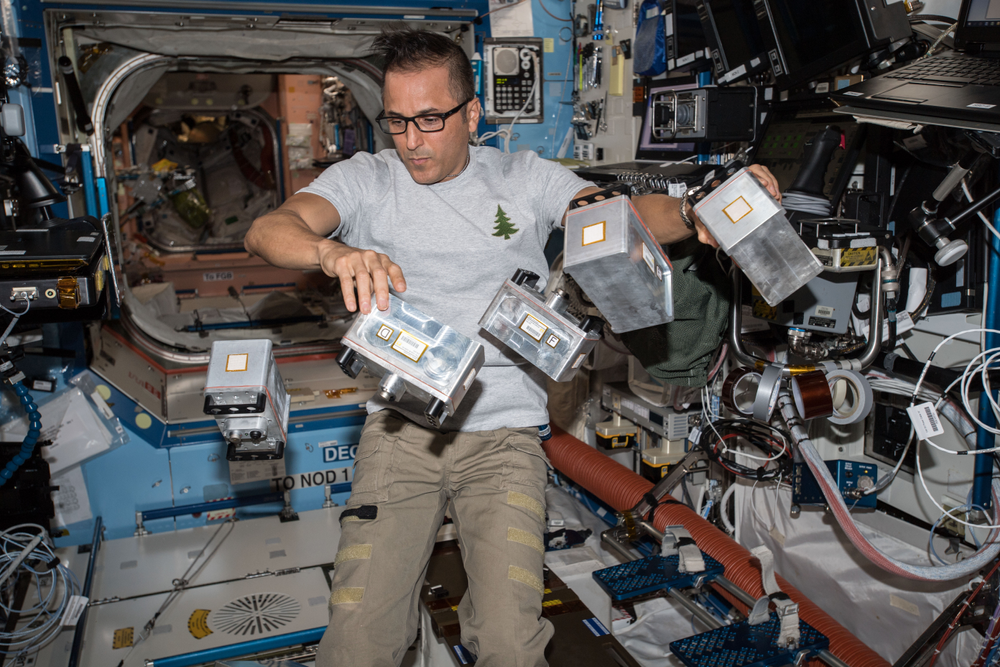Station Science Top News: Dec. 14, 2023
European Space Agency researchers discovered that in microgravity, foam coarsening includes formation of large, jammed bubbles (bubbles pressed against their neighbors) and a significant proportion of small, roaming bubbles. This unexpected finding does not fit current understanding of foam coarsening and has potential implications for applications of foams, which include firefighting, water treatment, and production of lightweight materials in space and for making detergents, food, and medicine and for oil recovery on Earth.
Foam coarsening, a thermodynamic process where large bubbles grow at the expense of smaller ones, is crucial for the stability of dense particle packings such as alloys, foams, and emulsions. FSL Soft Matter Dynamics (FOAM) investigates bubble size and rearrangement dynamics for wet foams, which are dispersions of gas bubbles in a liquid. This research must be done in microgravity, as drainage prevents wet foam stabilization on Earth. A better understanding of wet foam properties could help improve their various uses.

Credit: NASA/Christopher Cassidy
***
Researchers using combined RNA and cellular analyses report details on how microgravity affects Arabidopsis plants, including changes in metabolic pathways and energy requirements. These findings provide novel insight into how plants adapt to spaceflight and are a step toward sustainable crop production on the Moon and Mars.
BRIC-LED-001 evaluated the use of light emitting diodes (LED) for growing plants in a closed system and validated the hardware for future research. This work is part of a larger goal of growing plants in space to provide fresh food and contribute to life support systems on future space missions.

***
Crew members on the space shuttle Columbia in 1983 were the first to use amateur radio to communicate from space with people on Earth. On Nov 13, 2000, the inaugural crew on the International Space Station hosted the first session of ISS Ham Radio, which has operated continuously ever since. The International Space Station Program team recently featured these anniversaries in articles that resulted in national media attention, including from “The Today Show” and “Fox News.”
ISS Ham Radio now hosts about a hundred contacts a year. A million students have participated to date from 49 U.S. states, 63 countries, and every continent, and another 12 million people have listened in. These experiences encourage interest in science, technology, engineering, and mathematics (STEM) education and help inspire the next generation of scientists and engineers.
Read more here.







